Selenium Course
- 65k Enrolled Learners
- Weekend/Weekday
- Live Class
Here, we will discuss the relevance of properly selecting valuable tools for adequate software development process automation. Given that the demand for quality QA services is steadily rising, enrolling in a QA Automation Course can assist you in navigating the complexities of automated testing and ensuring successful project completion.
Table of Content
Selecting the proper automation testing tools is a vital step in achieving successful software testing results. Given the large number of options, one must consider a few curious features suitable for the project and the abilities of the working team.
First, consider the specificities of the given project. Depending on the type of application you are testing, choose the appropriate tool for web/mobile/desktop applications. Also, consider the compatibility of the programming language since it may affect your team’s ease of use of the software.
Next, scalability is critical. With this, the automation tool should grow progressively with your project so as to meet the increasing workload. Ensure that the tool performance remains high as the number of tests rises.
Integration competency is as essential as the others that have been listed. To effectively integrate the solution into your existing resources, it should integrate well with your current development and testing tools, including CI/CD pipelines and a bug-tracking tool. Secondly, it is possible to estimate the learning curve. If the design is friendly, easy to navigate, and accompanied by clear instructions, it will take your staff less time to enroll.
Choosing the finest automation test tools requires a deliberate approach customized to your project’s requirements. Begin by thoroughly assessing your project needs, including the sorts of apps you’re testing and the precise functionality you want. This will allow you to limit your alternatives.
Think about the specialization of your employees. If some of your team members are good in specific programming languages, use tools that will be compatible with those languages so as to minimize the amount of time your team members will be required to spend training on the tool. An excellent Automation Testing Tutorial could help your team familiarise itself with the technology and shorten the time needed to onboard new members. Conducting trial runs or proof-of-concept testing on shortlisted tools is quite valuable. This hands-on experience allows you to assess how effectively each tool performs in real-world circumstances and how it fits your workflow.
On the same note, decide on the objective that you want to achieve in the long term concerning your testing methods. Your chosen tool should also be able to adapt to your project as it evolves, meeting the needs of the current stage. Considering all these factors will enable one to select an automated testing platform that corresponds with the goals and objectives laid down in enhancing testing productivity.
Explore the best automated testing tools that help enhance your software testing techniques to get better results in less time and maintain the quality of the delivered products in today’s rapidly growing development phase. It would be better to delve into simple decisions on selecting the right tools and knowing what is automation testing. Here is the automation testing tools list:
Selenium is a feature-rich and widely used open-source automation testing tool for web-based applications. Organisations run it on numerous programming languages like Java, C#, and Python, thus benefiting developers and testers. Selenium automates the browsers by providing the ability to write robust test scripts to determine the application performance on several browsers and OS. Selenium, best supported by the seriousness of its community and the documentation made available by the developers, is an excellent solution for those teams that are determined to enhance testing speed while still delivering the best quality software.
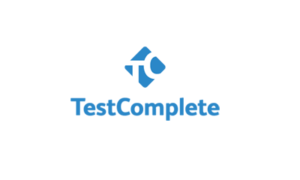
TestComplete is software for integrated, GUI automated online, desktop, and mobile application testing. It has a user-friendly interface that enables users to write automated tests using a script or keywords. TestComplete’s advanced capabilities, including AI-driven test generation, visual object identification, and seamless connection with CI/CD technologies, enable teams to enhance testing productivity and minimise time to market. Its robust reporting and analytics features give helpful information about test results and application quality.
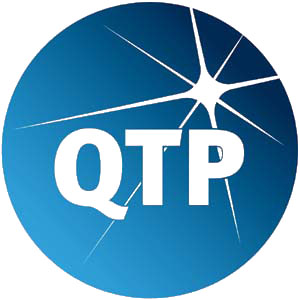
QTP, now called UFT, stands for Unified Functional Testing and is one of the widely used tools for functional and regression testing. Micro Focus developed it, enabling testers to record and replay users’ interactions with applications running on different platforms. Hence, to respond to the expectations of various organisations, QTP has the following benefits: a simple and convenient interface for tests, keyword-based testing, and extensive integration facilities, which will help increase the productivity of testing and ensure the quality of the software product.
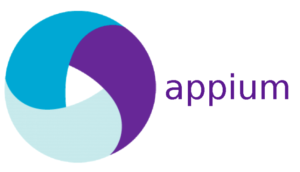
Appium is an open-source tool used to automate the testing of mobile applications on both Android and iOS. It empowers ramp testers to develop tests in such programming languages as Java, Python, and Ruby, which increases flexibility and versatility. Appium is a tool that allows automating native, hybrid and mobile web applications based on WebDriver. Mobile cross-features of Appium make it possible to push mobile testing processes in organisations forward while keeping the UX consistent with the device or OS the application is launched on.

Cypress is a current-generation, open-source tool for automated testing designed chiefly for web applications. As expected, there has been a direct UI interface and real-time testing capabilities that enable the developers and testers to come up with the tests and run them quickly. Cypress is a next-gen tool that executes in the browser, which ensures that the tests run fast and reliably, has a great developer tool stack, and includes features for waiting-on elements. Cypress comes with well-documented documentation, which, coupled with its JavaScript nature, makes it a perfect substitute for organisations that aim at enhanced testing output and quality applications.
Related Learning: Cypress vs Selenium
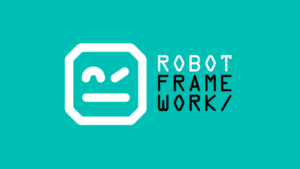
Robot Framework is an agile, open-source tool based on a keyword-driven approach. It is versatile because it can be used even by persons who are not technically inclined. It supports multiple types of libraries and tools used for web testing, such as Selenium and mobile testing with Appium. This makes the framework more straightforward and accessible for testers to develop grade and collaborative test constructs. The integrated reporting and logging options that come as standard with Robot Framework provide sound, different views of the test history and the execution outcomes that help the teams enhance their testing practices while ensuring they continue delivering high-quality software.

Katalon Studio is an efficient automation testing tool that helps testers in online, mobile, API, and desktop app testing. The software is easy to work with, as shown by the clean layout of the interface and features like keyword-driven tests and built-in reporting and integration with popular CI/CD tools. Katalon Studio supports various scripting languages, allowing testers to write strong test cases quickly. With its strong community support and rich documentation, Katalon Studio is an excellent solution for organisations aiming to improve testing efficiency and assure high-quality software delivery.

SoapUI is a prominent open-source tool focusing on API testing and covers REST and SOAP services. It lets users quickly build, maintain, and run automated functional and load tests. SoapUI has a user-friendly interface and supports both graphical and scripting ways for creating tests, making it appropriate for testers of various skill levels. SoapUI’s features include thorough reporting, data-driven testing, and robust assertion capabilities, allowing teams to ensure their APIs’ stability and performance efficiently.
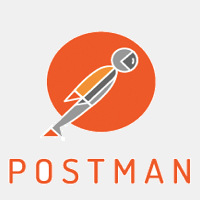
Postman is a popular API testing application that streamlines the creation and testing of APIs. It offers a straightforward interface for initiating queries, evaluating replies, and managing API processes. Postman helps developers and testers expedite their API testing process by providing capabilities such as automated testing, collections, and environment variables. Additionally, its collaboration tools enable teams to exchange APIs quickly, test cases, and documentation, improving communication and efficiency across the software development lifecycle.

JUnit is a popular open-source Java testing framework that makes it easy to develop and run unit tests. It allows you to use annotations to describe test cases, setup, and takedown procedures, which promotes organised and maintainable code. JUnit works well with various development environments and builds tools, making it a popular choice for Java developers. Its robust assertions and broad reporting features help assure code quality and dependability, allowing for more effective test-driven development techniques.

TestNG is a robust testing framework based on JUnit that improves Java application testing with enhanced capabilities. It supports annotations, which allow for more flexible test configuration and administration. TestNG supports simultaneous test execution, grouping, and data-driven testing via parameterisation. Its robust reporting and logging features give helpful information about test outcomes. Furthermore, TestNG works smoothly with standard development tools and CI/CD pipelines, making it an excellent alternative for teams aiming to increase testing productivity while maintaining high-quality software.
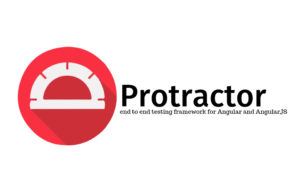
Protractor is an end-to-end testing tool for testing Angular and Angular JS. Protractor based on WebDriverJS enables developers to build JavaScript and test online applications interacting with GUI most accurately. It automatically waits for Angular operations to complete, thus making tests run smoothly and correctly every time. The software known as Protractor helps in performing BDD and interoperates with other frameworks like Jasmine and Cucumber. Despite its simplicity, Protractor’s potent capabilities and the backing of Angular make it an absolute must-have for guaranteeing Angular application reliability.

Cucumber is a tool that helps write test cases for behaviour-driven development (BDD). It uses simple English language in the syntax known as Gherkin. Many technical and non-technical employees can participate in the testing procedure since the concept is easy to understand. Cucumber can be integrated with many programming languages such as Java, Ruby and JavaScript; thus, it can be processed for various tasks. Hence, its focus on readability and modularity guarantees that tests are always a faithful representation of business requirements and application behaviour.

Automation testing tools are at their various layers, and their richness is at Sharp’s desktop, online, and mobile applications. It has an easy-to-use interface wherein tests can either be recorded without typing any single line of code or, on the other hand, it can also be programmed with the help of scripts. Some features that make Ranorex powerful are object identification, test recording, and CI/CD technology integration. This is because its reporting and analytical capacities are very effective in helping teams and project managers correctly monitor the performance and results of the tests. Thus, Ranorex, with its great community, is the perfect solution for organisations that want to enhance the productivity of tests and the quality of the software.

Gatling is an open-source performance testing tool for web applications. It excels at simulating large loads to determine application performance and scalability. Gatling defines test scenarios in Scala using an easy-to-use DSL (Domain-Specific Language), resulting in flexible and expressive test scripts. Its real-time monitoring and thorough reporting tools give helpful information on response times and throughput. Gatling’s efficient design and capacity to accommodate thousands of concurrent users make it perfect for teams looking to ensure optimal application performance under duress.
Related Learning: Playwright vs Selenium
To summarise, picking the best test automation tools is critical for improving software quality and productivity. Understanding your project needs and using the benefits of multiple technologies can expedite your testing operations. Furthermore, knowing the most popular Automation Testing Interview Questions will allow you to successfully explain your experience and exhibit your worth to potential software testing companies.
Automation testing is performed using various technologies, including Selenium, Appium, TestComplete, Katalon Studio, JUnit, TestNG, and Cucumber, all of which are meant to improve testing productivity for different types of applications.
Jira is not an automation test tool but primarily a project management and problem-tracking platform. However, it may be integrated with various test automation technologies to help manage testing operations.
QA testing tools are software programs that help to assure product quality by automating testing procedures, maintaining test cases, tracking defects, and improving cooperation between development and testing teams.
Selenium is better suited for functional testing of web applications, but JMeter excels in performance and load testing. The decision is based on your testing requirements and objectives.
 Thank you for registering Join Edureka Meetup community for 100+ Free Webinars each month JOIN MEETUP GROUP
Thank you for registering Join Edureka Meetup community for 100+ Free Webinars each month JOIN MEETUP GROUPedureka.co